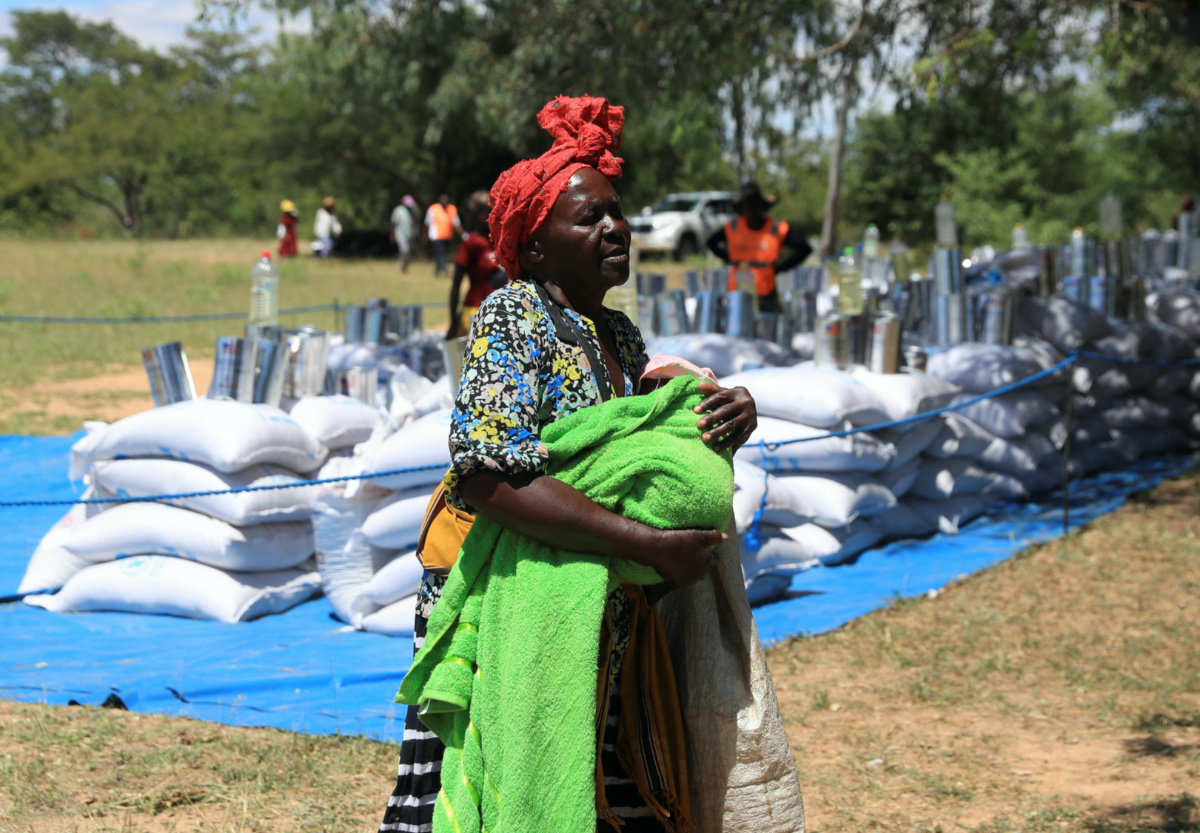Buhera, Zimbabwe
Reuters
Residents of the Zimbabwean village of Buhera stood in groups at a primary school waiting to be called by name to receive life-saving handouts of grain, peas and cooking oil.
“We are grateful, but the food will only be enough for one month,” said Mushaikwa, 71, who lives with her elderly husband, as she trudged away with her bag of grain. “My crops are wilted.”

A villager arrives to collect her monthly allocations of food aid provided by the World Food Program (WFP) in Mumijo, Buhera district east of the capital Harare, Zimbabwe, on 16th March, 2024. PICTURE: Reuters/Philimon Bulawayo
Zimbabwe has failed to feed itself since 2000 when former president Robert Mugabe seized white-owned farms, disrupting production and leading to sharp falls in output, leaving many Zimbabweans reliant on food aid for survival.
The crisis has been exacerbated by an El Nino-induced drought that has hit many southern African nations. The government has estimated that 2.7 million people will go hungry this year, although the real number could be higher.
The government is considering whether to declare a state of emergency, a government minister told Reuters.
El Nino is a naturally occurring weather phenomenon associated with a disruption of wind patterns that means warmer ocean surface temperatures in the eastern and central Pacific.
It occurs on average every two to seven years, typically lasts nine to 12 months and can provoke extreme weather such as tropical cyclones, prolonged drought and subsequent wildfires.
“When you drive around, you will see that many crops have wilted,” said World Food Programme acting country director Christine Mendes in Buhera, about 220 kilometres south-east of the capital, Harare.
Zimbabwe’s staple maize harvest is expected to halve to 1.1 million tons this year.
WFP has helped 270,000 people in four drought-prone districts between January and March but will need additional funds to feed more, said Mendes.
In Buhera, 47-year-old Mary Takawira assessed her crop, which dried up before maturity.
“I do not remember the taste of [corn] anymore,” she said. “This is going to be a tough year.”






